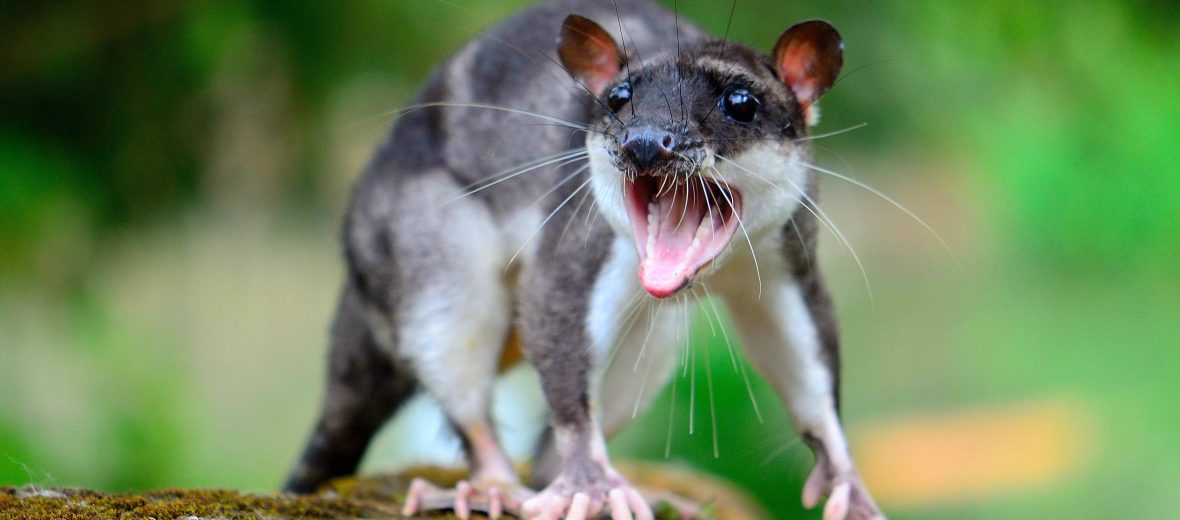
The water opossum, aka yapok, is a marsupial and is the only living member of its genus, Chironectes. They can be found through southern Mexico, down to Central and South America. These are the only known living marsupial where both genders have a marupium (pouch). Previously, only the thylacine (Tasmanian tiger) was the only other marsupial to have this trait. Even though they face the threats of habitat destruction, at the hands of logging (both legal and illegal) and water pollution (at the hands of the gold mining industry), these critters are still listed as Least Concern by the IUCN. However, their numbers are decreasing.
First the Stats…
Scientific name: Chironectes minimus
Weight: Up to 1.7 lbs.
Length: Up to 28 inches, plus up to a 15.75 inch tail
Lifespan: Up to 3 years
Now on to the Facts!
1.) They prefer to live near freshwater lakes, rivers, and streams; in moist tropical forests.
2.) These critters sleep in burrows along the banks of water bodies during the day.
3.) Water opossums are nocturnal (active at night).
4.) The water opossums have large, webbed hind feet that they use for swimming. They swim via alternating strokes of their hind legs and use their tail as a rudder.
5.) When faced with a land-based predator, they will escape via jumping into a nearby body of water.
But wait, there’s more on the water opossum!
6.) They prey on crustaceans, fish, and other aquatic creatures, like aquatic insects and amphibians.
7.) Their primary predators are caimans, jaguars, and owls. Humans also hunt them for bush meat and for their skin.
Did you know…?
The females have a pouch to house the joeys, whereas the males have a pouch to hold and protect their genitals when swimming.
8.) These opossums are polygynandrous (promiscuous – males and females have multiple partners).
9.) Females undergo up to a 14 day gestation (pregnancy) that yields up to 5 joeys.
10.) Joeys show fur by up to 22 days. Their eyes open in up to 40 days. In up to 48 days, the joeys detach from mom’s teats. After this time, they will still return to mom to nurse, but will now begin exploring, but still stay close to mom.
But wait, there’s still more on the water opossum!
11.) Water opossums are the most aquatic living marsupial in the world.
12.) They have been around since the Pliocene Epoch (up to 5.33 million years ago).
Did you know…?
Since they can only run upwards of 7 mph, they utilize burrows, trees, and of course water to escape predation. If escape isn’t an option, they will growl, hiss, and bite. They may also engage in myotonia congenita (where they feign death).
13.) It’s thought that the name “yapok” hails from the Oyapok River in French Guiana.
14.) Their marsupium has a strong ring of muscles that seal tight, when in water. This way a female can keep her joeys safe and dry while being totally submerged in water.
15.) Their dense and short fur is also water repellent and keeps them dry, even when underwater.
Now a Short Water Opossum Video!
Be sure to share & comment below! Also, check out the Critter Science YouTube channel. Videos added regularly!
Want to suggest a critter for me to write about? Let me know here.
Think you know a lot about critters? Try your hand at these fun, free quizzes:



